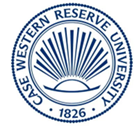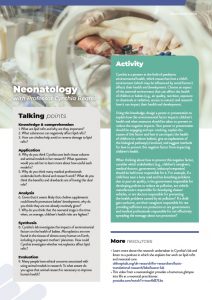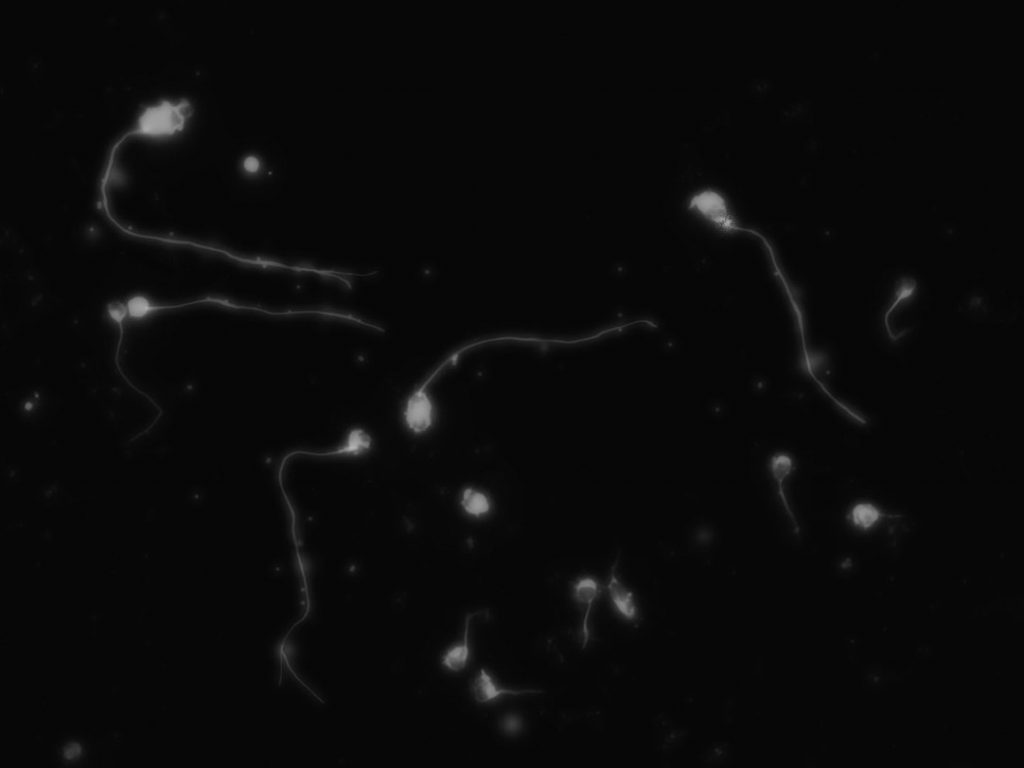
Exploring the cell structures that boost babies’ brain growth
[[{“value”:”
Exploring the cell structures that boost babies’ brain growth
Lipid rafts are structures found in cell membranes that are essential for healthy brain development. As a neonatologist at the Rainbow Babies and Children’s Hospital in the US, Professor Cynthia Bearer is studying how the lipid rafts of newborn babies can be disrupted. She hopes to improve treatments that aim to reduce the negative impacts of lipid raft disruption.
Talk like a neonatologist
Albumin — a protein in blood plasma
Bilirubin — a substance formed from haemoglobin when red blood cells are broken down
Choline — a nutrient that is important in the development of cell membranes
Docosahexenoic acid (DHA) — a long polyunsaturated (containing double bonds) fatty acid found surrounding lipid rafts
Lipid — a fat molecule
Lipid raft — a structure found in cell membranes, formed of lipids, cholesterol and proteins
Neonatal — related to the first 28 days after birth
Neurodevelopment — the process by which the brain develops and organises itself
Neuron — a nerve cell
Plasma — the liquid component of blood
Tissue culture — living cells grown in a lab and used for experiments
The development of our nervous system begins well before birth. “The first neurons will appear when the clump of cells in the early embryo begins to differentiate into specialised cell types,” says Professor Cynthia Bearer, a neonatologist at the Rainbow Babies and Children’s Hospital. “A neuron begins with a spherical shape then grows into a long thin structure that becomes a nerve.” As these nerves develop, they create connections that form our nervous system, including our brain. While a lot of brain development happens before a baby is born, it continues rapidly in the weeks following birth as the baby begins to interact with its environment. Ensuring that the brain has the conditions it needs to develop properly is vital.
Cynthia is investigating how specialised structures, called lipid rafts, affect neurodevelopment. Her research covers the function of lipid rafts, how they are affected by nutrition and environmental factors, and how medical interventions can support babies at risk of lipid raft damage.
Lipid rafts: holding it together
Lipid rafts are unsung heroes in neurodevelopment. “Lipid rafts are structures made of lipids and proteins that ‘float’ on the surface of cell membranes,” says Cynthia. “They are very dynamic as they constantly fall apart and reform.” Lipid rafts help control the functions of proteins in the cell membrane and aid the development of healthy neurons. “We have discovered that lipid rafts are found at the head of growing neurons, where they support the proteins that control where the cell should grow,” says Cynthia. “If this process is disrupted, the baby will have birth defects or developmental disabilities.”
Docosahexenoic acid (DHA) is a fatty acid that surrounds lipid rafts and helps hold them together. If the chemical double bonds in the DHA molecule are broken, then the lipid raft will disintegrate. One way that these bonds can be broken is through insufficient oxygen reaching the brain, which premature babies are especially vulnerable to. “The lack of oxygen results in the production of reactive oxygen species, which break double bonds,” says Cynthia. “This will destroy DHA and, therefore, lipid rafts.”
Ethanol and bilirubin: disruptors of lipid rafts
It is recommended that pregnant mothers do not drink alcohol, because ethanol is known to interfere with foetal development. But ethanol is not only found in drinks. It is also in hand sanitiser and many liquid medications. “This means babies can be exposed to alcohol via a variety of pathways, especially if they need urgent medical care following birth,” explains Cynthia, who has been investigating the effects of ethanol on lipid rafts.
Other substances, including those produced by the body, can also interfere with lipid rafts. “Bilirubin is created when haemoglobin in red blood cells breaks down,” says Cynthia. “Normally, bilirubin is joined to another molecule that makes it water soluble and allows it to leave the body as a waste product – bilirubin is the molecule that makes faecal matter brown.” However, sometimes this joining process can be disrupted, and bilirubin can build up and cause problems.
Reference
https://doi.org/10.33424/FUTURUM603


“Bilirubin is fat-soluble, so it can easily enter lipid rafts,” explains Cynthia. “In our lab, we grew tissue cultures of neurons and found bilirubin in the lipid rafts. This implies bilirubin influences lipid rafts or disrupts their function somehow.” As well as tissue cultures, Cynthia also uses animal models to test her hypotheses. “For example, we use rats with a genetic mutation that stops bilirubin developing into water-soluble bilirubin, so it stays fat-soluble,” she explains. Normally, bilirubin binds to albumin in the blood, but when there is too much, it exceeds the capacity of the albumin. This leaves excess bilirubin free in the blood plasma and it can enter the lipid-rich brain. “In our rats, this increase in free bilirubin resulted in lots of bilirubin in the brain where it interfered with lipid rafts and neurodevelopment.”
Choline: a miracle nutrient?
Choline is a nutrient that is fundamental to healthy lipid rafts. “Choline is needed to make lipids and vital components of our cell membranes,” says Cynthia. As a growing baby is rapidly producing lots of cells, which involves creating lots of new cell membranes, it is especially important that pregnant mothers and newborn babies have sufficient choline to support this development.
Cynthia and her team tested whether choline could improve the health outcomes of cells and animals impacted by alcohol or bilirubin. “We discovered that if we supplement our tissue cultures and rats with choline, it prevents the negative impacts of both alcohol and bilirubin on lipid rafts,” says Cynthia. “Even when baby rats from choline-deficient mothers were supplemented with choline after birth, it almost reversed the issues caused by bilirubin.”
This research could have significant impacts for neonatal care. If babies have suffered damage to their lipid rafts, for example due to lack of oxygen or exposure to alcohol or bilirubin, then providing choline supplements after birth could help to reverse this damage. Cynthia wants to translate her research from tissue cultures and animal models into humans, to test whether choline supplements could help newborn babies who need medical care. “We’ve measured choline levels in premature babies, and about two-thirds appear to be choline deficient,” she says. “This means it’s harder for them to make the brain connections that are so important for development.” Cynthia hopes to build a case for providing choline supplements to newborn babies in the neonatal intensive care unit, potentially helping to avert significant developmental issues.
 Professor Cynthia F. Bearer, MD, PhD
Professor Cynthia F. Bearer, MD, PhD
Chief of Neonatology, University Hospitals – Rainbow Babies and Children’s Hospital, Ohio, USA
Professor of Pediatrics, Case Western Reserve University, USA
Field of research: Neonatology
Research project: Investigating the importance of lipid rafts for neurodevelopment
Funder: US National Institutes of Health (NIH) grants: NCATS UL1TR002548, NICHD 1R21105071-01, NICHD 1P01HD085928- 01A1, NICHD 1R21HD085061-01A1, NIAAA 1 R01 AA016398-01A1
About neonatology
Neonatology is the branch of medicine focused on the treatment and care of newborn babies, both in practice and research. The neonatal period (the first 28 days after birth) is a critical period for development. Medical care for sick newborn babies is incredibly important and complex, so it is vital to understand the biological processes going on and to develop interventions for when things go wrong.
Like many medical researchers, Cynthia’s time is split between research and clinical practice. Her specialism in neonatology defines her role in the hospital, where she works in the neonatal intensive care unit to treat premature babies and newborn infants with various health conditions.
When not treating newborns, Cynthia is busy leading research projects – with a portfolio that is far broader than the molecular biology of lipid rafts. Cynthia is a founder of the field of paediatric environmental health, which investigates how environmental factors affect the health outcomes of babies and children. “One of my current research projects is investigating how noisy versus quiet hospital environments affect the auditory (hearing) development of premature babies,” she says. “The final weeks of pregnancy are an important time in the development of the auditory system as an unborn baby can hear sounds from outside and within their mother – but premature babies miss out on this stage of development in the womb.” Cynthia’s theory is that the quiet, clinical environment of the neonatal intensive care unit may negatively affect premature babies’ auditory development, so she is playing womb sounds to premature babies to test whether this can help the development of the brainstem and its functions.
Pathway from school to neonatology
Neonatology is a subspecialty of paediatrics, the medical care and treatment of children. The most common pathway to becoming a neonatologist is through qualifying in medicine, then specialising in paediatrics followed by neonatology.
At school, the most useful subjects to take to prepare for a degree in medicine are biology, chemistry and mathematics. Other subjects such as psychology and physics can also help, while arts-based subjects like English or languages can help develop communication and people skills.
At university, study medicine to become a clinical neonatologist. A degree in biology, molecular biology, biochemistry or neuroscience could lead to a research career in neonatology.
Different countries will have different qualification requirements for becoming a clinical neonatologist, so check the requirements for where you want to study and work.
Explore careers in neonatology
As a neonatologist, you could have a clinical career caring for sick newborn babies or a research career investigating health conditions that impact newborn babies. Or, like Cynthia, you could have a career that combines both research and clinical work.
The University of Medicine and Health Sciences has a useful blog post that explains what neonatologists do and how to become one: umhs-sk.org/blog/how-to-become-a-neonatologist
This blog provides a ‘day in the life’ of a neonatologist on a neonatal intensive care unit: wakehealth.edu/locations/facilities/nicu/a-day-in-the-life-of-a-nicu-doctor
Meet Cynthia
My journey to become a neonatologist was long and tortuous! My parents instilled a love of the natural environment in me. While in high school, my friend introduced me to the idea of ‘paying back’ our good fortune through giving back to society, which I liked a lot. So, when applying for college (to study a major in mathematics and a minor in biology), I thought I might go into medicine after graduating.
By the time I graduated, I didn’t feel ready to take care of patients in an emergency room, but I was very good at science. So, I did a PhD in biochemistry, using my mathematics background as a tool to understand the experiments I was doing. After my PhD, I worked in a lab to get more practical research experience, involving some very interesting experiments and modelling of enzyme and hormone pathways.
I still wanted more opportunities for translational research – to apply my science to improve human health. So, I went back to school to study medicine, where I fell in love with neonatology during my clinical training. I was fascinated by what we didn’t yet know about development, so I got involved with neonatology research. But when the project came to an end and didn’t result in a new grant, I felt I needed to rethink my career.
I was 40 years old, and I decided I was a failure. I needed to do something else. I realised that I wanted to connect my concern about the environment (which is why I got into science in the first place) to my knowledge of biochemistry and my clinical medical skills. So, I decided I would become a researcher in a field that didn’t exist at the time: paediatric environmental health.
It was a big, risky step that I took to reshape my career. I had to be willing to risk failure, and it paid off. I found other researchers with similar interests and we started to study how environmental factors disrupt neurodevelopment. It’s been a really satisfying journey since then.
Cynthia’s top tips
1. Follow your gut, not your head. Don’t do something because someone told you to do it. Follow what you are passionate about.
2. Don’t be afraid to fail. In order to succeed, you have to fail a couple of times. I would never have developed the career I have now if I hadn’t had failures along the way.
Do you have a question for Cynthia?
Write it in the comments box below and Cynthia will get back to you. (Remember, researchers are very busy people, so you may have to wait a few days.)

Discover how a neonatologist is using saliva to diagnose health conditions in newborn babies:
www.futurumcareers.com/how-can-saliva-help-us-diagnose-and-care-for-newborn-babies
The post Exploring the cell structures that boost babies’ brain growth appeared first on Futurum.
“}]]





